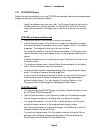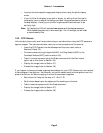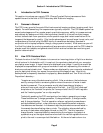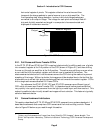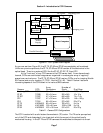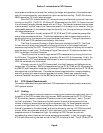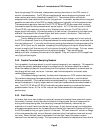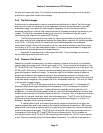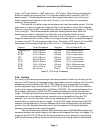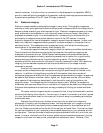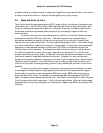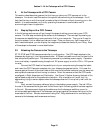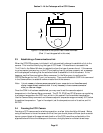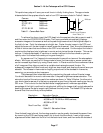Section 2 - Introduction to CCD Cameras
Page 10
minute, eliminating the many "hot" pixels one often sees across the image, which are simply
pixels with higher dark current than average.
2.4.4. Flat Field Images
Another way to compensate for certain unwanted optical effects is to take a "flat field image"
and use it to correct for variations in pixel response uniformity across the area of your dark-
subtracted image. You take a flat field image of a spatially uniform source and use the
measured variations in the flat field image to correct for the same unwanted variations in your
images. The Flat Field command allows you to correct for the effects of vignetting and
nonuniform pixel responsivity across the CCD array.
The Flat Field command is very useful for removing the effects of vignetting that may
occur when using a field compression lens and the fixed pattern responsivity variations present
in all CCDs. It is often difficult to visually tell the difference between a corrected and
uncorrected image if there is little vignetting, so you must decide whether to take the time to
correct any or all of your dark-subtracted images. It is always recommended for images that
are intended for accurate photometric measurements.
Appendix D describes how to take a good flat field. It's not that easy, but we have
found a technique that works well for us.
2.4.5. Pixels vs. Film Grains
Resolution of detail is determined, to a certain degree, by the size of the pixel in the detector
used to gather the image, much like the grain size in film. The pixel size of the detector in the
ST-7E and ST-8E is 9 x 9 microns (1 micron = 0.001mm, 0.04 thousandths of an inch) and in the
ST-9E it's 20 x 20 microns. However, the effects of seeing are usually the limiting factor in any
good photograph or electronic image. On a perfect night with excellent optics an observer
might hope to achieve sub-arcsecond seeing in short exposures, where wind vibration and
tracking error are minimal. With the average night sky and good optics, you will be doing well
to achieve stellar images in a long exposure of 3 to 6 arcseconds halfwidth. This will still result
in an attractive image, though.
Using an ST-7E or ST-8E camera with their 9 micron pixels, an 8" f/10 telescope will
produce a single pixel angular subtense of 0.9 arcsecond. A 8" f/4 telescope will produce
images of 2.5 arcseconds per pixel. If seeing affects the image by limiting resolution to 6
arcseconds, you would be hard pressed to see any resolution difference between the two focal
lengths as you are mostly limited by the sky conditions. However, the f/4 image would have a
larger field of view and more faint detail due to the faster optic. The ST-9, with its 20 micron
pixels would have the same relationship at roughly twice the focal length or a 16 inch f/10
telescope. See table 4.4 for further information.
A related effect is that, at the same focal length, larger pixels collect more light from
nebular regions than small ones, reducing the noise at the expense of resolution. While many
people think that smaller pixels are a plus, you pay the price in sensitivity due to the fact that
smaller pixels capture less light. The ST-9E with its large 20 x 20 micron pixels captures five
times as much light as the ST-7E and ST-8E's 9 micron square pixels. For this reason we
provide binning on the ST-7E and ST-8E that configure the camera for 18 or 27-micron square
pixels. Binning is selected using the Camera Setup Command. It is referred to as resolution



